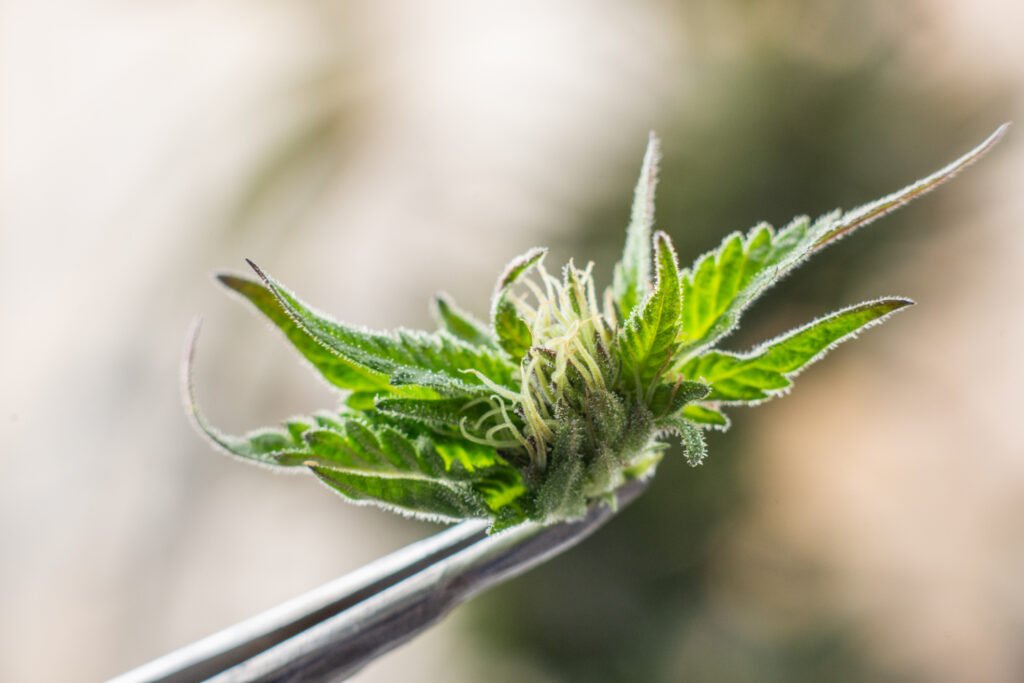Currently, the cannabis export market is expanding worldwide due to the growing economy and the legalization of cannabis in each country, resulting in more quality cannabis producers. Therefore, the production of quality cannabis flowers in the global market is more competitive, causing cannabis farms in each country to emphasize the quality and good cannabis cultivation techniques to create a unique identity for each farm.
Cannabis Farms is not just about growing plants with medical value but is also a rapidly growing economic plant on a global level. Currently, cannabis cultivation has developed innovative techniques to meet the increasing demand for quality, efficiency, and sustainable resource use.
1. Precision Agriculture: Data-Driven Cultivation
Precision agriculture uses technology to monitor and optimize the growing environment. Tools like drones, IoT sensors, and AI-powered analytics allow farmers to track real-time data on soil moisture, temperature, light exposure, and nutrient levels.
Key Benefits:
- Optimized Resource Use: Reduces water, energy, and fertilizer waste.
- Improved Crop Health: Early detection of pests, diseases, or nutrient deficiencies.
- Maximized Yield: Data-driven decisions enhance productivity.
For instance, AI-driven irrigation systems ensure plants receive water precisely when needed, improving efficiency and plant health.

2. Vertical Farming: Growing Upwards
Vertical farming has revolutionized urban cannabis cultivation by allowing crops to grow in stacked layers within controlled environments. This technique maximizes the use of vertical space, making it ideal for areas with limited land.
Key Benefits:
- Year-Round Growth: Indoor setups provide consistent conditions regardless of weather.
- Space Efficiency: Increases yield per square meter.
- Sustainability: Requires less water and reduces pesticide use.
Advanced vertical farms use hydroponics or aeroponics to deliver nutrients directly to plants, further boosting growth rates and conserving resources.
3. Hydroponics and Aeroponics: Soil-Free Cultivation
Traditional soil-based farming is being replaced by hydroponic and aeroponic systems, which grow plants in nutrient-rich water or mist. These methods allow for precise nutrient control and faster growth cycles.
Hydroponics:
- How it Works: Plants are submerged in water infused with nutrients.
- Advantages: Enhanced root absorption, reduced water usage, and higher yields.
Aeroponics:
- How it Works: Roots are suspended in air and sprayed with nutrient solutions.
- Advantages: Increased oxygen availability leads to rapid growth and larger plants.
Both techniques are highly efficient and ideal for indoor or vertical farming setups.

4. Sustainable Practices: Organic and Regenerative Farming
Sustainability is a major focus in cannabis farming. Organic methods avoid synthetic chemicals, while regenerative farming emphasizes improving soil health and biodiversity.
Techniques:
- Composting: Converts organic waste into nutrient-rich fertilizer.
- Cover Cropping: Protects soil and enhances fertility naturally.
- No-Till Farming: Preserves soil structure and reduces erosion.
These practices result in cleaner, safer cannabis products while minimizing environmental impact.
5. Genetic Engineering and Breeding Innovations
Cannabis breeders are using advanced genetics to develop strains with desired traits, such as higher THC/CBD levels, disease resistance, or faster flowering times.
Key Innovations:
- CRISPR Technology: Enables precise editing of cannabis DNA for targeted improvements.
- Hybrid Strains: Combines the best characteristics of different cultivars for unique effects and flavors.
Genetically enhanced strains not only appeal to consumers but also offer better resilience against pests and climate fluctuations.
Conclusion
The rise of innovative techniques in cannabis farming marks an exciting new chapter for the industry. From precision agriculture to renewable energy, these advancements are driving higher yields, better-quality products, and reduced environmental impact. As consumer demand and regulations evolve, the adoption of these technologies will play a critical role in shaping the future of cannabis cultivation. For farmers, embracing innovation is not just an option—it’s the key to thriving in this competitive and dynamic market.

